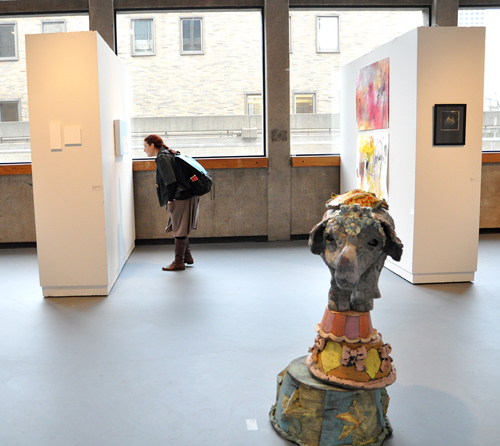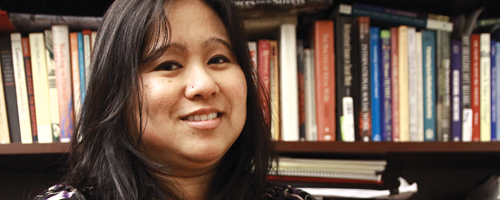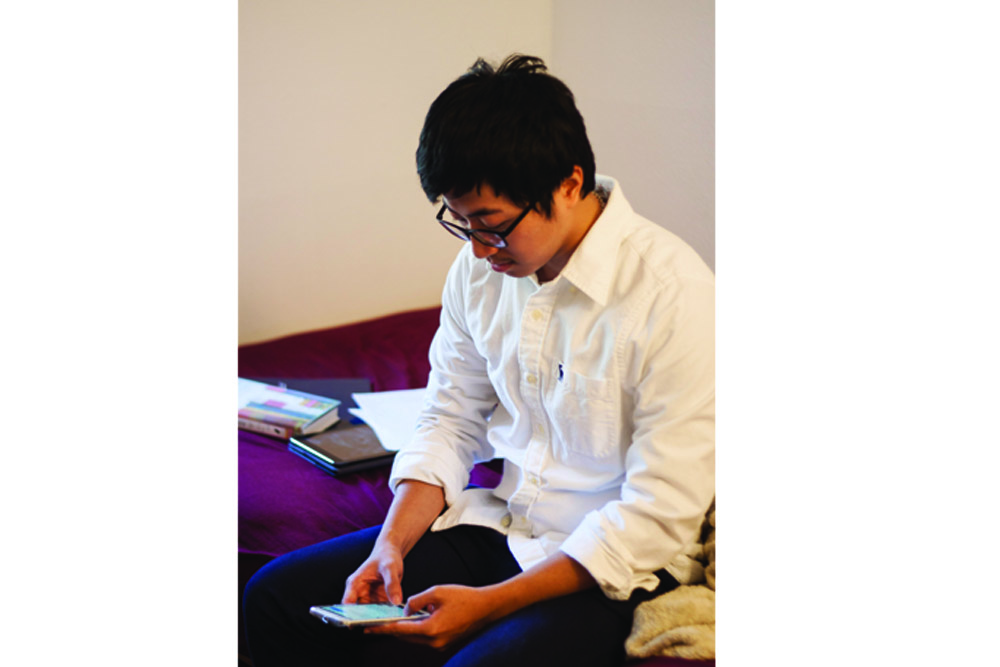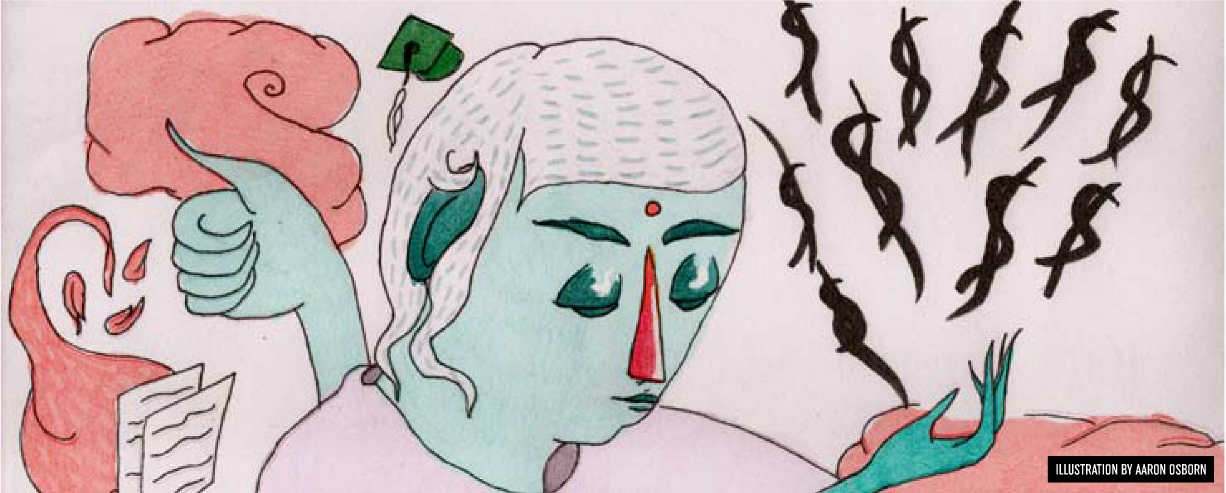Autzen Gallery’s ongoing exhibition, Exchange: PSU & U of M—The University of Montana MFA Exchange Exhibition at Portland State University, showcases not only the creative talent of another Pacific Northwestern university; it explores a new dimension in graduate-level art programs.
Interstate art show
Autzen Gallery’s ongoing exhibition, Exchange: PSU & U of M—The University of Montana MFA Exchange Exhibition at Portland State University, showcases not only the creative talent of another Pacific Northwestern university; it explores a new dimension in graduate-level art programs.
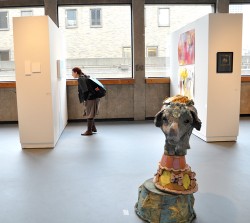
The 21 University of Montana grad students whose work is currently on display in the gallery packed their exhibits, and themselves, into a van and drove over the Rocky and Cascade Mountains to install them on our campus with Autzen director Patrick Rock. They then spent two nights in Portland, attending First Thursday gallery exhibits and visiting the Portland Art Museum.
Meanwhile, PSU grad students got a practicum from a professional “preparator” (a specialist in packing and preparing fine art and museum specimens for display) and shipped their work to the University of Montana, where it is currently on display at that school’s Gallery of Visual Arts.
PSU professor Patricia Boas, who along with University of Montana professor Kevin Bell conceived of and organized the project, calls the exchange “a possible pilot” for future similar projects. Both professors said that, as far as they know, this is the only project of its type in the region.
“This is possibly the first iteration…to see how easy or difficult it would be,” Boas said.
The two professors conceived of the idea at an art educators conference in Saint Louis, Mo., in order “to increase contact and networking in MFA programs,” according to Boas.
“It’s also to create dialogue” and broaden the size and scope of the community,” Bell added.
“A smaller program such as ours has a lot of dialogue, but pretty quickly that gets to be a community,” Boas said.
However, a tight knit community can be limiting in terms of feedback. Fresh perspectives are invaluable, according to Boas. With an exchange exhibition such as this, “perhaps a student can look at their work and say, ‘The scale is a little off’…Or look at it and see that it’s absolutely right,” she said.
Bell sees the project as a means to develop a regional visual arts identity. There was some overlap in the themes explored, Bell said. Students from both schools, by virtue of their geographic and political proximity, are dealing with the issues and myths of the American West, he explained.
The exhibits are not what the artists might necessarily consider “the ultimate fulfillment of their artistic vision,” according to Boas. Rather, the work represents a median point in the artists’ development. The idea is to give students the opportunity to interact with one another’s work and offer feedback in the midst of the creative process.
This also happens to be one of the challenges of Exchange. Although students show their work at other times during the master’s program, “one difficulty is that their work should be developing under shelter. It’s kind of contradictory that we are having a display during this experimentation period,” Boas said.
The conversation between the students was meant to serve pragmatic ends as well.
“Artists are very much entrepreneurs on some level, in that they have to find a way to get out there and do their work,” Bell said.
This means that they need access to often large and expensive equipment such as kilns, and they need money, marketing and publicity. By building their social networks around the region, they can help each other find and access facilities and contacts, and put together shows. Finding opportunities to do that while still in school can smooth out the transition to creating and displaying art outside of the university environment.
“There is always going to be an idea of the lone artist in the studio who gets recognized and picked up by a major gallery,” Bell said of the largely mythical view of the artist’s ascendance.
Bell sees the exchange as an idea that could be implemented across curricula as well as the region. He and Boas are confident that this could be the beginning of a trend in artist networking.
“I hope there begins to be a conversation across these regional schools,” Bell said. “I think this is a unique and innovative thing, and there needs to be a lot more of it in the future.”
Student reaction to the exchange was mixed, with some students expressing frustration that the process felt inorganic and that their time was extremely limited.
“It would have been more useful if we had them sit in on a critique,” Portland State MFA student Steven Brown said. “More than one student said they wish they could have come to our studios and see what we’re doing.”
“Our time was so short that it was hard to get any real exchange to happen,” said Sam Guerrero, another Portland State MFA student. “We did exchange emails, and I believe that there is the possibility for some sort of collaboration in the future.”
The PSU Art Department is planning a similar project with the San Francisco Art Institute in March, which the participating students are enthusiastic about.
Exchange: PSU & U of M—The University of Montana MFA Exchange Exhibition at Portland State University
On view through Friday, Feb. 24
Neuberger Hall 205
Free and open to the public

